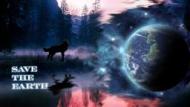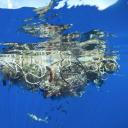That big plastic continent in our Earth. • Shortlink
When the first map of Ocean plastic garbage was created, marine ecologists was astonished and baffled.
The Spanish marine ecologist Andres Cozar Cabanas ( "Cabanas" written with tilde) and a researchers team have published their work on Proceeding of the National Academy of Sciences, which points out the dramatic pollution in our Oceans: milions of tiny pieces of plastic drebrits floating in five large tropical "subcontinents"; that is real plastic islands!
Plastic world production is quadrupled since the 1980, and the lack of civility in humans and other questions, have brought out to these sediments in Ocean. The wind action, moreover, and the Sun heat have contributed to choped up plastic garbage into small fragments the size of rice grains. These tiny bits may travel very far through the water for the continuous Ocean currents, as they are lighter, untill reach every coast in the world. After this obserbation, scientists can claim there's would be more floating plastic than in the lands.
According to a interview posted on "NationalGeographic.com", "<< Our observations show that large loads of plastic fragments, with siezes from microns to some milimeters, are unaccounted for in the surface loads>>, says Cozar, who theaches at the University of Cadiz in Spain << But we don't know what this plastic is doing. The plastic is somewhere - in the Ocean life, in the depths, or broken down into fine particles undetectable by nets>>". This one as Laura Parker wrote on National Geographic.
]
We are not noticing, but in this moment all this toxic garbage is deterioring and modify negatively the delicate marine ecosystem. Plastic bits can be absorbed in fish both trough respiration ( filtration of plastic with gills) and through feeding ( eating other organisms which have absorbed plastic particles). Whether from one side, plastic particles could lead fish to death, from other one fish could be fished and these damaging pieces reach human through food chain. Not only humans, but even birds which feed on fish: in many skeletron of birds was found thousands of plastic debris.
For a more real view, here the Cozar's map, referred I wrote at first of this article, taken from Laura Parker's article: every points are plastic sediments which dimension ranges according to the color.
latest jordan SneakersWomen's Designer Sneakers - Luxury Shopping
